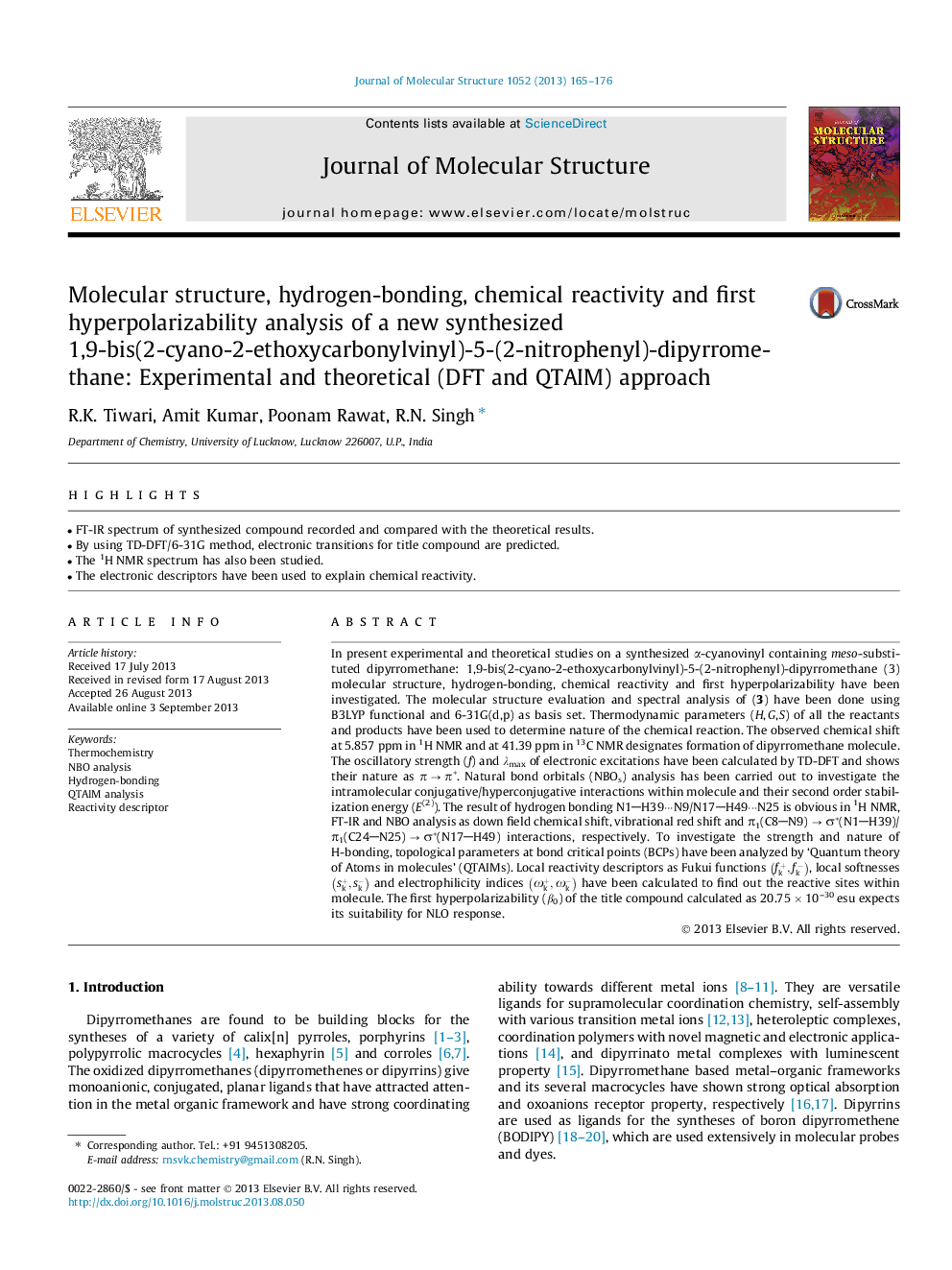| Article ID | Journal | Published Year | Pages | File Type |
|---|---|---|---|---|
| 1402864 | Journal of Molecular Structure | 2013 | 12 Pages |
•FT-IR spectrum of synthesized compound recorded and compared with the theoretical results.•By using TD-DFT/6-31G method, electronic transitions for title compound are predicted.•The 1H NMR spectrum has also been studied.•The electronic descriptors have been used to explain chemical reactivity.
In present experimental and theoretical studies on a synthesized α-cyanovinyl containing meso-substituted dipyrromethane: 1,9-bis(2-cyano-2-ethoxycarbonylvinyl)-5-(2-nitrophenyl)-dipyrromethane (3) molecular structure, hydrogen-bonding, chemical reactivity and first hyperpolarizability have been investigated. The molecular structure evaluation and spectral analysis of (3) have been done using B3LYP functional and 6-31G(d,p) as basis set. Thermodynamic parameters (H, G, S) of all the reactants and products have been used to determine nature of the chemical reaction. The observed chemical shift at 5.857 ppm in 1H NMR and at 41.39 ppm in 13C NMR designates formation of dipyrromethane molecule. The oscillatory strength (f) and λmax of electronic excitations have been calculated by TD-DFT and shows their nature as π → π*. Natural bond orbitals (NBOs) analysis has been carried out to investigate the intramolecular conjugative/hyperconjugative interactions within molecule and their second order stabilization energy (E(2)). The result of hydrogen bonding N1H39···N9/N17H49···N25 is obvious in 1H NMR, FT-IR and NBO analysis as down field chemical shift, vibrational red shift and π1(C8N9) → σ*(N1H39)/π1(C24N25) → σ*(N17H49) interactions, respectively. To investigate the strength and nature of H-bonding, topological parameters at bond critical points (BCPs) have been analyzed by ‘Quantum theory of Atoms in molecules’ (QTAIMs). Local reactivity descriptors as Fukui functions fk+,fk-, local softnesses sk+,sk- and electrophilicity indices ωk+,ωk- have been calculated to find out the reactive sites within molecule. The first hyperpolarizability (β0) of the title compound calculated as 20.75 × 10–30 esu expects its suitability for NLO response.
